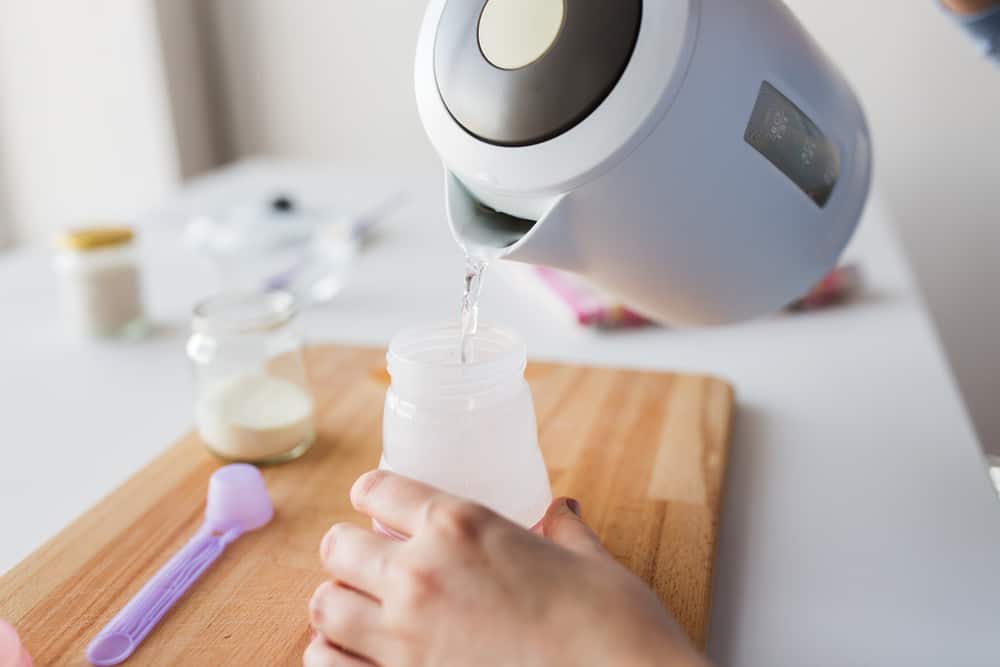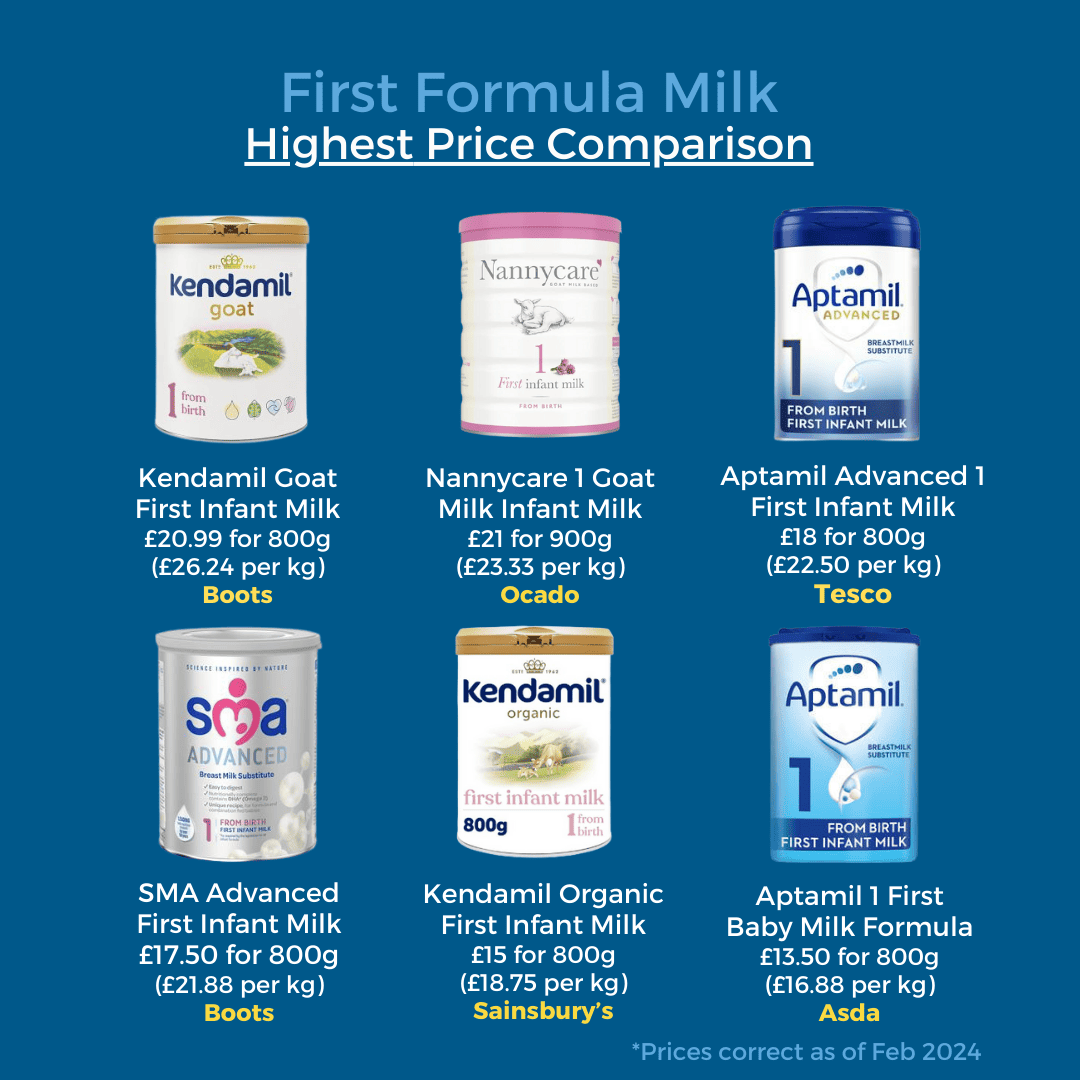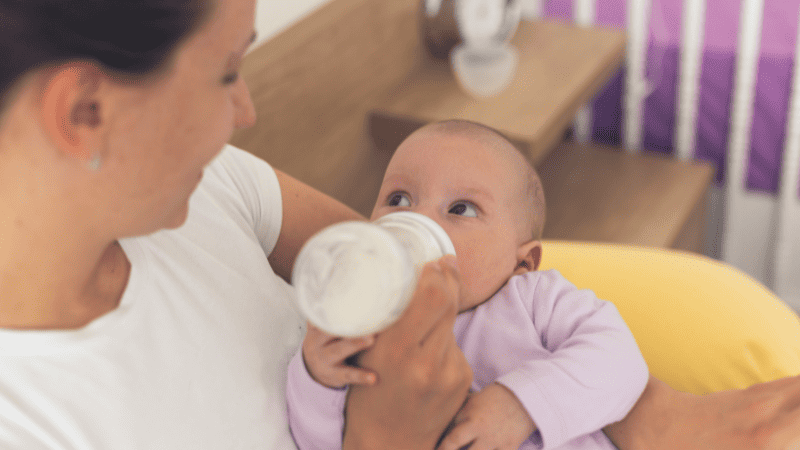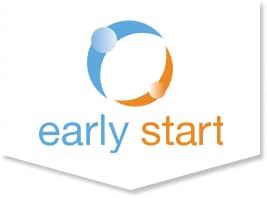In this blog we’ll be exploring the Start for Life guide to preparing infant formula, how to sterilise baby feeding equipment and making up your baby’s feeds safely. It’s also important that staff in your early years setting (nursery/childminder) follow the step- by- step guide to correctly and safety preparing feeds.

What is infant formula milk?
Infant formula milk, also known as baby formula or infant formula, is usually made from cows’ milk that has been treated to make it suitable for babies. Infant formula milk comes in two different forms:
- a dry powder that is made up with water
- ready-to-feed liquid formula.
While ready-to-feed liquid formula can be convenient, it tends to be more expensive. Ready-to-feed liquid infant formula is sterile until opened. All feeding equipment will still need to be sterilised. Once opened, any unused liquid infant formula that remains in the carton needs to be stored at the back of the fridge on the top shelf with the cut corner turned down, for no longer than 24 hours.
If you formula feed your baby, the NHS (opens in new tab) recommends that you use a first infant formula throughout the first year. There are different types of formula available in pharmacies and shops, but first infant formula is the only formula your baby needs
- All infant formula milks have a similar nutritional composition, as they must comply with UK regulations to ensure they are safe and nutritionally adequate for babies
- Some manufacturers add additional ingredients or use different formulations, but these offer no additional benefit (despite often claiming to!). If a substance was found to be beneficial for infant health, it would be in all products by law
- This means that no brand is better than another. However, there’s a big difference in the price of the least and most expensive formula milks on the market (see examples below). A higher price generally reflects the addition of non-essential ingredients and a higher spend on brand promotion.
- Talk to your midwife or health visitor if you have any questions.


The Importance of Sterilising Feeding Equipment
Powdered infant formula is not sterile and it may contain bacteria that can cause serious illness in infants. Correct preparation and handling reduces the risk of illness. Babies immune systems are not fully mature, making them more prone to becoming ill if exposed to harmful bacteria. So it’s vital to prepare their bottles hygienically to avoid contamination. It’s important to sterilise all baby’s feeding equipment, including bottles and teats, until they are at least 12 months old (or for as long as infant formula is offered).
Before sterilising, be sure to:
- Clean bottles, teats and other feeding equipment in hot, soapy water as soon as possible after feeds.
- Use a clean bottle brush to clean bottles (only use this brush for cleaning bottles), and a small teat brush to clean the inside of teats. You can also turn teats inside out and wash them in hot soapy water (to ensure all remaining feed is removed from the hard-to-reach places). Don’t use salt to clean teats, as this can be dangerous for baby.
- Baby’s feeding equipment can be put in the dishwasher to clean it, however this doesn’t sterilise it. Make sure bottles, lids and teats are facing downwards.
- Rinse all your equipment in clean, cold running water before sterilising.

Why sterilise feeding equipment?
It’s important to sterilise baby’s feeding equipment after you have washed and rinsed it, as washing will keep it clean but the temperatures reached are not high enough for sterilisation.
Sterilisation is important as the teats and screw tops of bottles are more difficult to clean and can trap harmful bacteria that could make baby ill. Cleaning and sterilising equipment removes harmful bacteria that could grow in the feed and make infants ill.
It is also important to clean and disinfect work surfaces that are going to be used and wash your hands to avoid contamination of bottles with bacteria from unclean work surfaces.
There are several ways to sterilise baby feeding equipment, including:
- cold water sterilising solution (shake off excess solution and rinse bottles in cooled boiled water from the kettle. Do not use tap water.).
- steam sterilising.
- boiling.
To prevent re-contamination, it is best to remove sterilised feeding and preparation equipment from the steriliser just before it’s needed. If you remove equipment from the steriliser before you need it, keep it covered in a clean place. Always fully assemble feeding bottles if you remove them from the steriliser before you need them. This will prevent the inside of the bottle and the teat becoming contaminated again. Wash your hands with soap and water, and dry well before handling sterilised equipment.
For more information visit the NHS website ‘Sterilising Baby’s Bottles’ (opens in new tab).
How to Safely Prepare Powdered Infant Formula
Check out this video we’ve put together to show you the steps to follow when preparing a powdered formula feed or see the steps outlines below:
- Fill the kettle with at least 1 litre of fresh tap water from the cold tap (don’t use water that has been
boiled before). - Boil the water and leave to cool in the kettle for no more than 30 minutes so that it remains at a temperature of at least 70°C.
- Clean and disinfect the surface you are going to use.
- Wash your hand thoroughly using soap and warm water.
- If you are using a cold-water steriliser, shake off any excess solution from the bottle and the teat, or rinse the bottle with
cooled boiled water from the kettle (not the tap). - Stand the bottle on a clean surface.
- Keep the teat and cap on the upturned lid of the steriliser. Avoid putting them on the work surface.
- Follow the manufacturer’s instructions and pour the correct amount of water into the bottle. Double check that the water level is correct (bend down so you are eye level with the bottle).
- Loosely fill the scoop with formula –according to the manufacturer’s instructions – and level it off using either the flat edge of a clean, dry knife or the leveller provided.
- Holding the edge of the teat, put it on the bottle. Then screw the retaining ring onto the bottle.
- Cover the teat with the cap and shake the bottle until the powder is dissolved.
- It is important to cool the formula so it is not too for baby to drink. Do this by holding the bottom half of the bottle under cold running water. Move the bottle about under the tap to ensure it is cooled evenly. Make sure that the water does not touch the cap covering the teat.
- Test the temperature of the infant formula on the inside of your wrist before giving it to baby. It should be body temperature, which means it should feel warm or cool, but not hot.
- If there is any made-up infant formula left after a feed, throw it away.
For more information check the Better Health Start for Life ‘Guide to Bottle Feeding (opens in new tab)‘.
Dos and Don’ts of Making Up Formula Feeds
- Manufacturers’ instructions vary. Some brands may require more water or powder than other, so it’s important to always follow the instructions carefully.
- Always use the allocated scoop that comes with each brand of formula.
- Don’t add extra formula powder when making up a feed. This can make cause babies to become constipated or dehydrated. Too little powder may not give baby enough nourishment.
- Don’t add sugar or cereals to formula milk.
- Do not leave the water to cool in the kettle for no more than 30 minutes when making up a formula feed and do not use previously boiled water. Powdered formula is not sterile (meaning it can still contain bacteria that could make baby unwell), so the water temperature should be at least 70C to kill off any harmful bacteria.
- Bottled water is not recommended for making up feeds, as it’s not sterile and may contain too much salt (sodium) or sulphate.
- Never warm up formula in a microwave, as it may heat the feed unevenly and burn baby’s mouth.
What about Expressed Breast Milk?
The advice above applies to all baby’s feeding equipment, and whether baby is offered expressed breast milk or formula milk. Always make sure that breast pumps and containers are clean and sterilised before using them.
You can find more information on expressing and storing breast milk here! (opens in new tab)
What is the advice on tap water?
If baby is younger than 6 months, it’s important to sterilise the water by boiling it first and then letting it cool right down. (opens in new tab)
Freshly drawn tap water is fine for all infants over 6 months of age.
A note on feeding equipment
Babies and young children are especially vulnerable to the bacteria that can cause food poisoning. To ensure babies are not at risk:
- Thoroughly wash all bowls and spoons used for feeding in hot soapy water and keep chopping boards and utensils thoroughly clean. Some NHS trusts recommend sterilising bowls and spoons before the age of 6 months
- Keep surfaces clean and keep any pets away from food or surfaces where food is prepared.
Top Tips When Feeding Baby
- Infant formula should only be made up when needed – one feed at a time
- Throw away any unused formula or breast milk after you have finished bottle feeding baby
- Babies will feel more secure if most feeds are given by their parents/main caregiver, especially in the early weeks, it will help you bond with each other
- Feed your baby when they show signs of being hungry: look out for cues (moving head & mouth around, sucking on fingers). Crying is the last sign of wanting to feed, so try and feed your baby before they cry
- Hold baby close in a semi-upright position so you can see their face & reassure them by looking into their eyes and talking to them during the feed
- Watch your baby and follow the cues for when they need a break; these signs will be different from one baby to the next. They may splay their fingers and toes, spill milk out of their mouth, stop sucking, turn their head away or push the bottle away. Gently remove the teat or bring the bottle downwards to cut off the flow of milk.
- Your baby will know how much milk they need. Forcing your baby to finish a feed will be distressing and can mean your baby is overfed.

Actions for Early Years Settings
Ensure that your setting:
- Has a comfortable area for mothers and families to feed their baby
- Has a policy that outlines how you safely prepare and store formula milk
- Has a dedicated space where staff and families can safely prepare formula milk
- Display the step by step guide to preparing powdered formula feeds in your milk preparation areas
- Displays and promotes the Start for Life formula feeding booklets that we outlined above
- Avoids the promotion of formula- milk and use of promotional materials from infant formula companies
- Is confident in knowing where to signpost families to if they have questions or concerns around their baby’s feeding.
Additional Support for Parents
You can access more information on feeding your baby:
- in our FREE e-guide ‘Feeding Your Baby in The First Year (opens in new tab)‘
- booking on our FREE webinar Weaning Your Baby (opens in new tab)
Additional Support for Early Years Settings
You can find more information on feeding babies in your early years by completing our online Food and Nutrition for Infants (opens in new tab) training.

